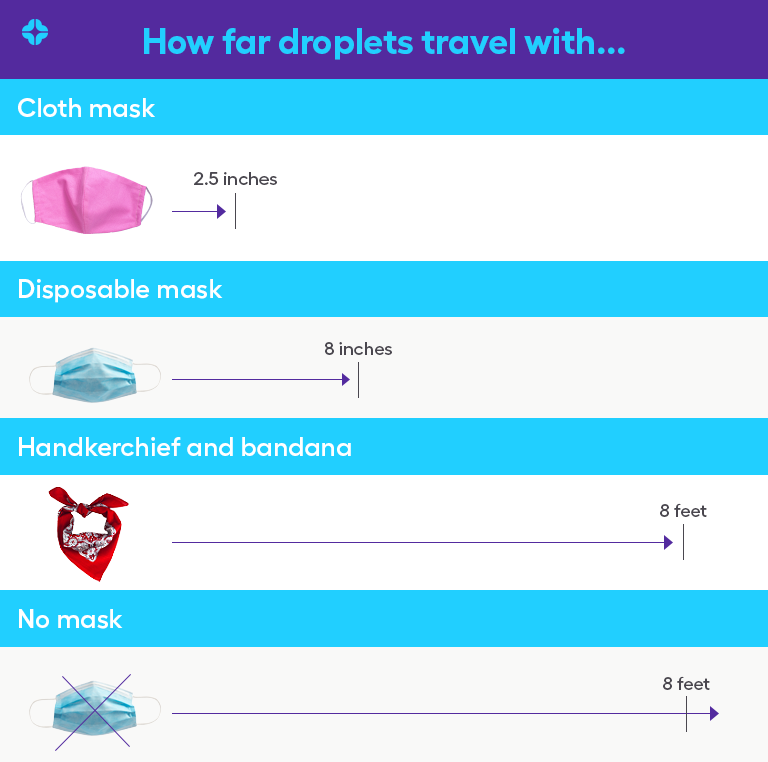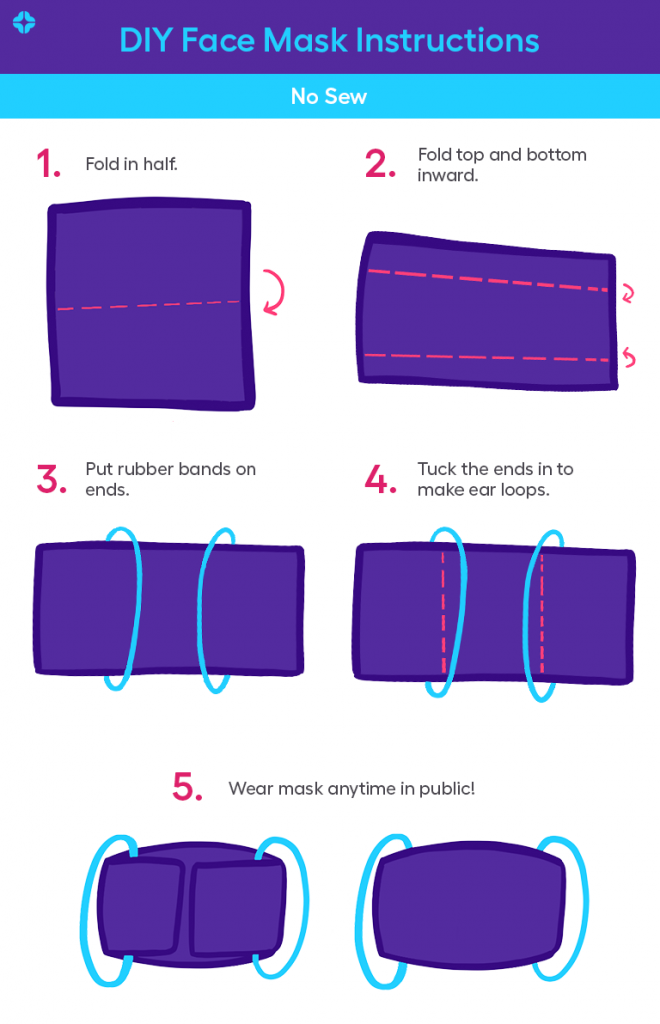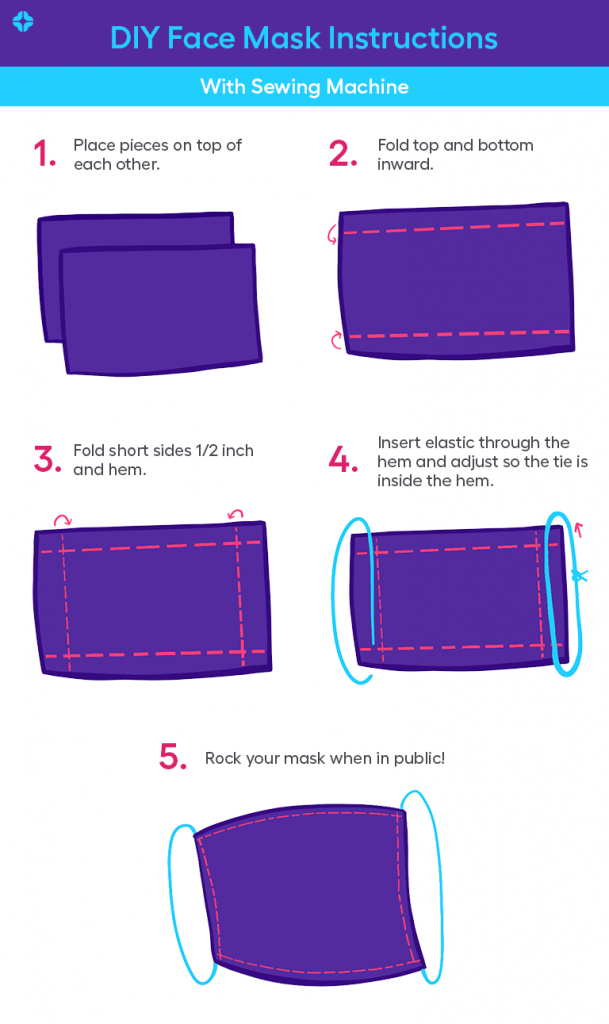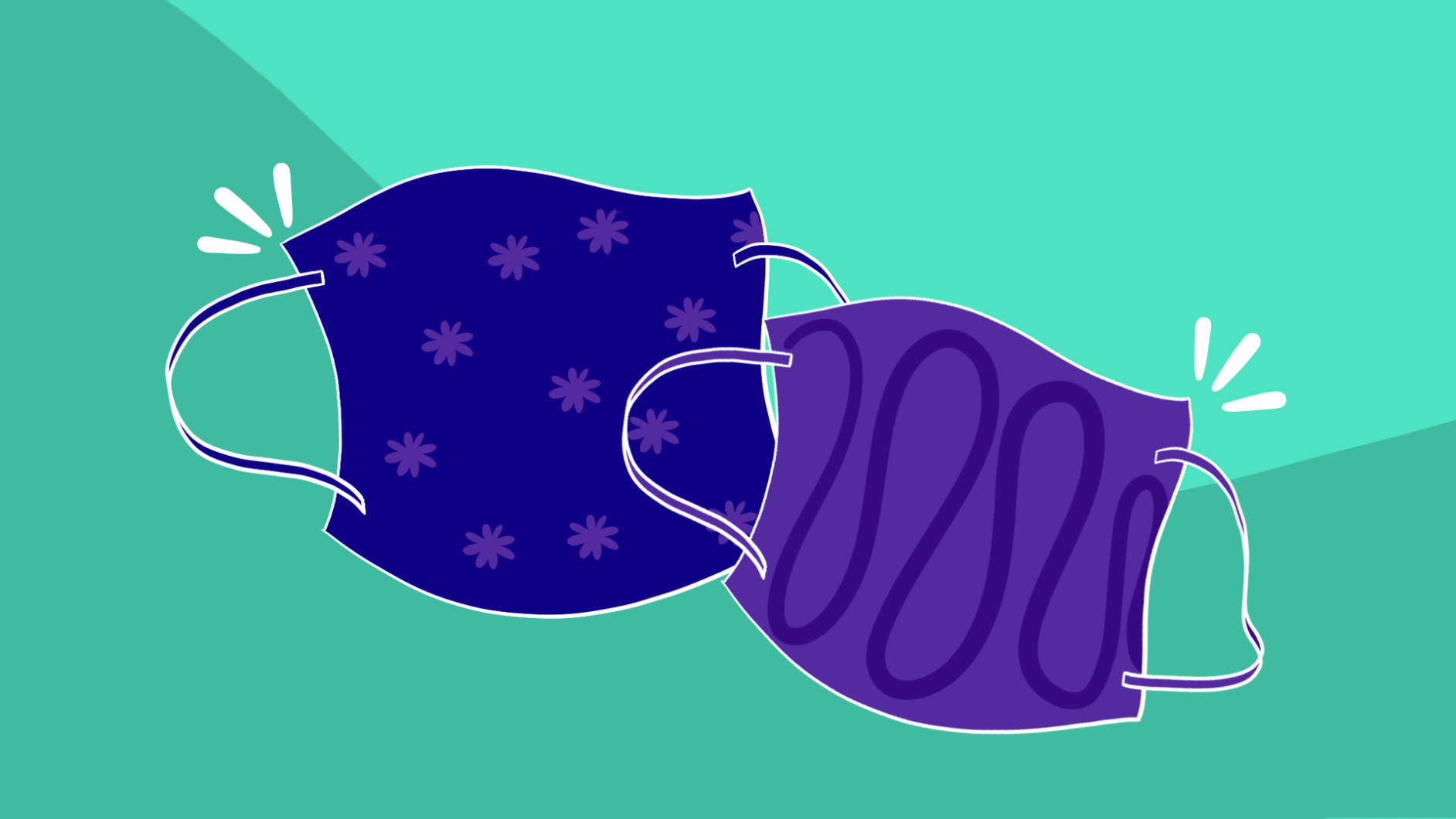Wearing a face mask is one of the most important precautions you can take to prevent the transmission of coronavirus, also known as COVID-19. Other important steps to take? Public health officials recommend handwashing, social distancing by at least 6 feet, not touching your face, and cleaning and disinfecting your surroundings. By practicing all these safety measures, you can not only keep yourself and your family healthy—but also your community at large.
But just because you know you should mask up doesn’t mean you know how. Here, we speak with infectious disease experts about what materials are best for reusable face masks, how to wear them correctly, and when and how to clean your masks properly.
How do face masks prevent the spread of coronavirus?
Cloth or surgical masks help prevent the transmission of respiratory illnesses like COVID-19 through airborne droplets released during sneezing, coughing, or even talking, especially in poorly ventilated, small spaces. (Wearing a mask can also protect you from the common cold or flu, which a 2018 study determined could also be airborne.) Additionally, wearing a mask could mean you won’t get as sick if you do contract the coronavirus. You should wear a mask around anyone you don’t live with.
“The main purpose of cloth face coverings is to decrease the transmission of SARS-CoV-2 [COVID-19] from infected people who may be infectious but do not have clinical symptoms of the virus or who may have early or mild symptoms that they do not recognize,” says Ravina Kullar, Pharm.D., MPH, a fellow and spokesperson of the Infectious Diseases Society of America. “However, the CDC also states that face coverings can also offer some protection against getting exposed again to the coronavirus. We still do not know if a person can get reinfected again yet.”
The latest study from the U.S. Centers for Disease Control and Prevention (CDC) estimates 40% of coronavirus infections in the United States are asymptomatic. You can also be pre-symptomatic, or, if there’s been a significant amount of time since getting tested and receiving a negative test, you could have contracted the virus in that time frame.
Best face masks for coronavirus protection
There are plenty of reusable masks to choose from, from colorful cloth masks online to fashionable ones from your favorite designer. The best face mask has multiple layers of fabric (cotton masks are best) and fits well over the wearer’s nose, mouth, and chin. Some masks come with pockets for disposable filters. You can also buy single-use masks in bulk online or at grocery or drug stores.
| Types of face masks | |||
|---|---|---|---|
| Materials | Materials | Efficacy | Best for |
| N95 mask | Synthetic plastic fibers | Blocks 95% of small particles | Healthcare workers |
| Face shields | Plastic or cloth | Reduces immediate viral exposure by 96% within 18” of a cough | Healthcare workers in addition to a face mask; people with breathing problems who cannot wear a mask |
| Reusable masks | Cloth | Blocks droplets at 2.5”; must be washed between each use | General public |
| Single-use masks | Paper or other non-woven material | Blocks droplets at 8”; must be discarded after each use | General public |
A recent study used a smoke machine and a manikin to emulate a human cough to visually measure how far the droplets would travel.
The droplets traveled more than 8 feet without a mask. The clear winner was a cloth mask made of two layers of quilting cotton, which stopped the droplets at around 2.5 inches. A disposable mask (in this case, a CVS Cone Face Mask made of various fibers) kept the droplets from traveling farther than 8 inches. Finally, the folded handkerchief and bandana were better than nothing, but not by much.
“Importantly, uncovered emulated coughs were able to travel notably farther than the currently recommended 6-foot distancing guideline,” the study concludes.

Another study evaluated the protection of face shields versus face masks. Although the face shields intercepted some droplets traveling toward the face, other droplets were still able to travel around the shield.
N95 respirators and similar medical-grade masks should only be used by frontline medical professionals, who are still in dire need of personal protective equipment (PPE).
“N95s have to be fitted to work correctly, and you cannot wear them for a prolonged period of time, so this isn’t something that we recommend, people just wearing when they’re out in the community,” says infectious disease expert Amesh Adalja, MD, a senior scholar at the Johns Hopkins University Center for Health Security. “We also want to make sure that we have enough N95s for healthcare workers—so you might be able to find them for sale, but it’s not something that we recommend people buy.”
Taking extra precautions is admirable, but the general public doesn’t need a medical face mask to hit the grocery store; a cotton face mask is fine.
Who should wear face coverings?
According to the CDC, everyone should wear a face covering in public settings. There are a few groups excluded from this recommendation:
- Children younger than 2 years old
- Anyone who has trouble breathing
- Anyone who is unconscious, incapacitated, or otherwise unable to remove the cloth face covering without assistance
For those who have trouble breathing, Dr. Kullar says that “alternative options can be used, such as a face shield.”
What are the laws around face masks and coronavirus?
Mask laws are different in every state and even between cities. #Masks4All crunched the numbers, and almost all of the states have at least some guidelines in place, with a growing number mandating them in public to one extent or another. The penalties for not wearing a mask differ by area, but could include a fine or a summons.
Businesses can be fined if they’re not in compliance with local regulations. They may refuse service to customers who aren’t wearing masks, or ask them to put one on before entering their business, even where masks aren’t mandated by law.
How to make face masks at home
The CDC provides instructions for making two kinds of cloth face masks: no-sew and regular.
No-sew face masks
You’ll need 20×20 inch piece of cotton cloth (from a scarf, bandana, towel, or T-shirt) and rubber bands or hair ties. (You can also watch video steps here.)
- Fold the fabric in half
- Fold the top down and the bottom up to meet in the middle.
- Put the rubber bands about 6 inches apart on the cloth.
- Fold the ends of the cloth into the middle and tuck them in the rubber bands to make ear loops.

Regular cloth face mask
In addition to a sewing machine, you’ll also need two rectangles of cotton fabric, measuring 10×6 inches each; two 6-inch piece of elastic or something similar; a needle and thread; and scissors.
The CDC’s instructions are as follows.
- Put the pieces of cotton on top of each other.
- Fold over the long sides ¼ inch and hem. Then fold the double layer of fabric over ½ inch along the short sides and stitch down.
- Run a 6-inch length of 1/8-inch wide elastic through the wider hem on each side of the mask. These will be the ear loops. Use a large needle or a bobby pin to thread it through. Tie the ends tight. (You can substitute ponytail holders, strips of cloth, or headbands to create ear loops.)
- Gently pull on the elastic so that the knots are tucked inside the hem. Gather the sides of the mask on the elastic and adjust so the mask fits your face. Then securely stitch the elastic in place to keep it from slipping.

How long can you wear a disposable mask for?
Keeping your masks clean is essential to stopping the spread of COVID-19, so only use your mask once before washing it or throwing it away if disposable. Consider your mask—especially the front and filter—to be contaminated after every use.
Dr. Kullar recommends the following method of removing a mask and therefore reducing your risk of exposure:
- Clean your hands with soap and water or hand sanitizer before touching the mask.
- Avoid touching the front of the mask as it is contaminated.
- Only touch the ear loops/ties/band.
- Hold both of the ear loops and gently lift and remove the mask.
- Wash and dry hands thoroughly.
Tips for cleaning masks
If you have a washable mask, you can toss your masks in with the rest of your laundry and run it on the hottest setting. If you don’t have access to a washing machine, don’t fret. You can wash your mask by hand using hot water and soap, then letting it air dry. (The CDC also has information on how to mix bleach and water together for a good mask soak.)
If your mask no longer fits your face and there are gaps between the cloth and your chin, cheeks, or nose, it’s time to replace it. This is especially important because it makes it all too tempting to touch your face to readjust your mask.
“If we could get everybody to wear a mask right now I think in four, six, eight weeks we could bring this epidemic under control,” says Robert Redfield, MD, the director of the CDC. Wearing a mask may add a few extra steps to your day and feel inconvenient, but it’s a small effort for such a big pay-off.











